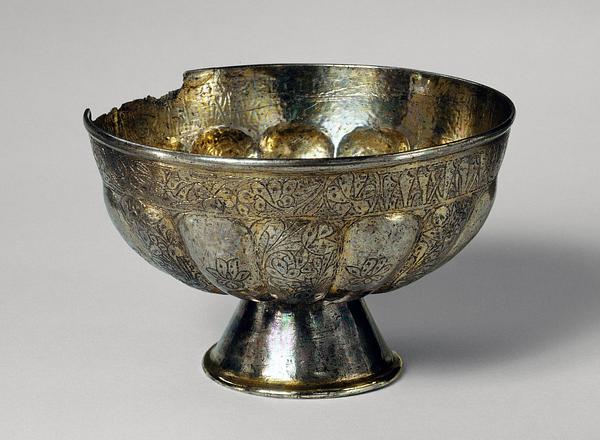Silver cup, beaten, engraved, and gilded
Southern Russia, Kazakhstan, or Iran; c. 1300
H: 7.5; Diam: 11.4 cm
The Mongols seem to have been especially fond of this type of silver, and related metalwork has been excavated in the area ruled by the Golden Horde. The engraved decoration, which consists of vegetal ornamentation and a pseudo-inscription, could also indicate a link to the Golden Horde.
This gilded silver cup also has a number of other distinctive features that link it to the Iranian region, however. It stands on a little foot and has bosses down the side. As such it represents a type that was also found in the Iranian area before the Mongol Il-Khanids seized power, making it difficult to determine precisely where the cup was made.
Inv. no. 47/1979
Published in:
Kjeld von Folsach: Islamisk kunst. Davids Samling, København 1990, kat. 334;
Kjeld von Folsach: Kunst fra islams verden i Davids Samling, København 2001, kat. 508;
Linda Komaroff og Stefano Carboni (red.): The legacy of Genghis Khan: courtly art and culture in Western Asia, 1256-1353, Metropolitan Museum of Art, New York 2002, fig. 53, kat. 156;
Linda Komaroff: Gifts of the Sultan: the arts of giving at the Islamic courts, Los Angeles County Museum of Art, Los Angeles 2011, kat. 19 og fig. 32;
Rachel Ward (red.): Court and craft: a masterpiece from Northern Iraq, Courtauld Gallery, London 2014, kat. 9, s. 110, 112-113;
Giovanni Curatola og Chiara Squarcina (red.): The worlds of Marco Polo: the journey of a Venetian merchant from the 13th century, Palazzo Ducale, Venedig, Arezzo 2024, kat. 174;
